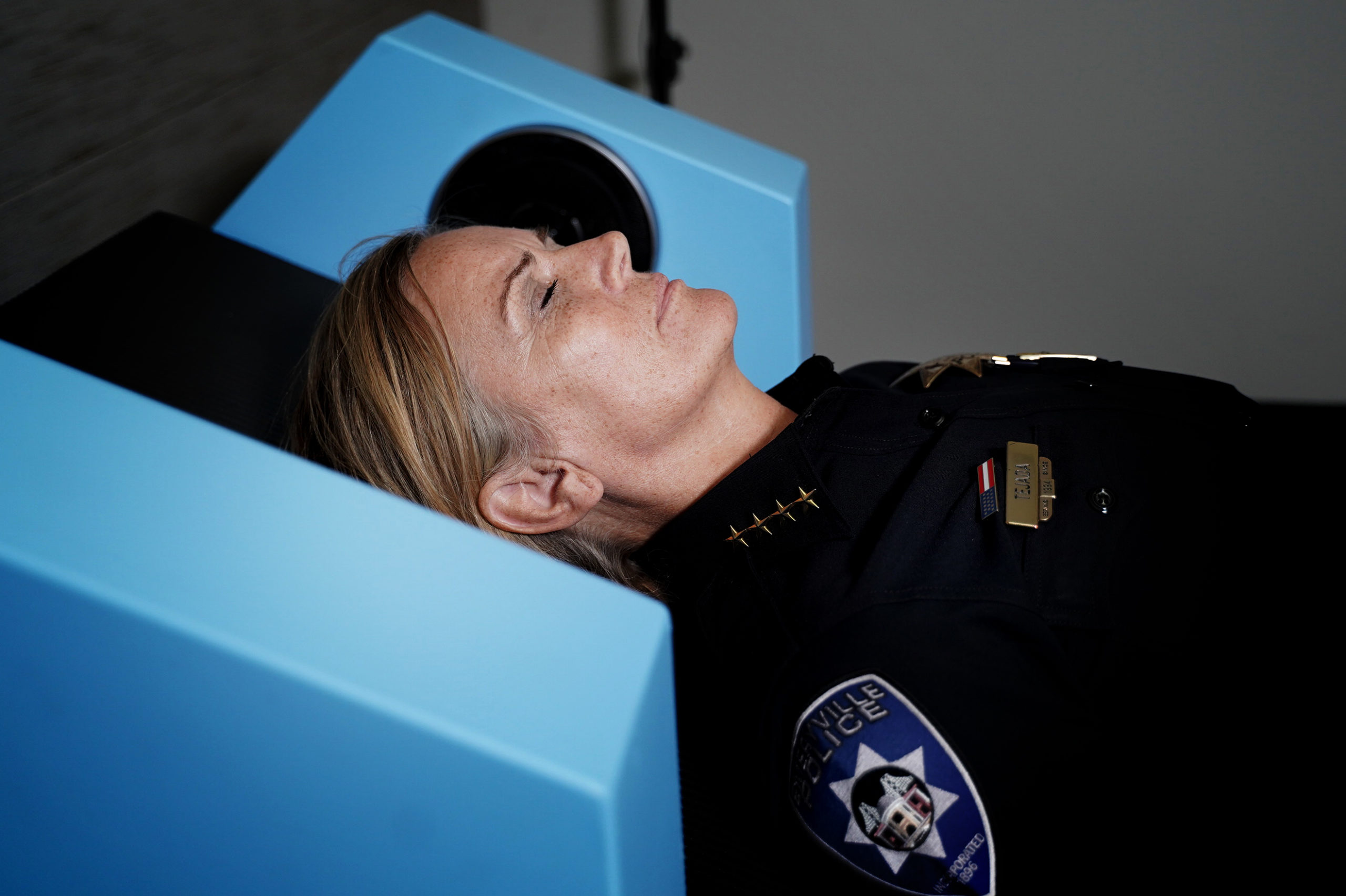This project began as an auditory protest prop to be projected at the police during protests and years later ended up being a Police Mindfulness Meditation Chair that was tested by police for five months in the Emeryville Police Department in 2019-2020.
When I was beaten by a police officer with a baton in an Occupy Oakland protest in 2012, I turned around to discover that the cop who ran ahead 15 yards to hit me had got back into formation and was grinning from ear to ear. While this was far from the height of police brutality, it was the moment I began to look into the psychology of policing.
I began researching and developing a guided mindfulness meditation specifically made for police. What began as a protest prop eventually became a special reclined chair that houses speakers to play hypnotic binaural audio and a guided meditation. These tools were developed from the hypothesis that significant percentage of abuse and killing of our citizens by police (not all) is caused by poor decision making in tense policing situations due to stress, ptsd, and anxiety. These symptoms can be treated and reduced through mindfulness meditation. Additionally, the audio, lights and dialogue are created to have a sedating or pacifying effect and the language of the meditation considers the gravity of their weapons and provokes thought of their connection to other people and the planet beyond the boundaries of state power.
In a series of conversations with Emeryville Police Chief Jennifer Tejada over several months (the first time I’ve ever had a gun in my home) I was transparent about my motivations and past work, but suggested that we shared a common goal – the reduction in police violence. We agreed to trying out the Mindfulness Chair Prototype in what ended up as a five month trial. While there was much skepticism, many police used the chair and filled out a questionnaire on their experience.
I am the first to say that this is not a solution to any institutional / structural problems in policing or the criminal justice system. Nor is it seen as a replacement for any efforts to defund, downsize or abolish policing and the criminal justice system. This work is merely a part of ongoing efforts to reduce police violence and loss of life.
More background writing on project below images.
Images: Emeryville Police Chief Jennifer Tejada using the chair at EPD, 2020. Mindfulness Meditation Chamber installation at the Museum of Capitalism, 2017.
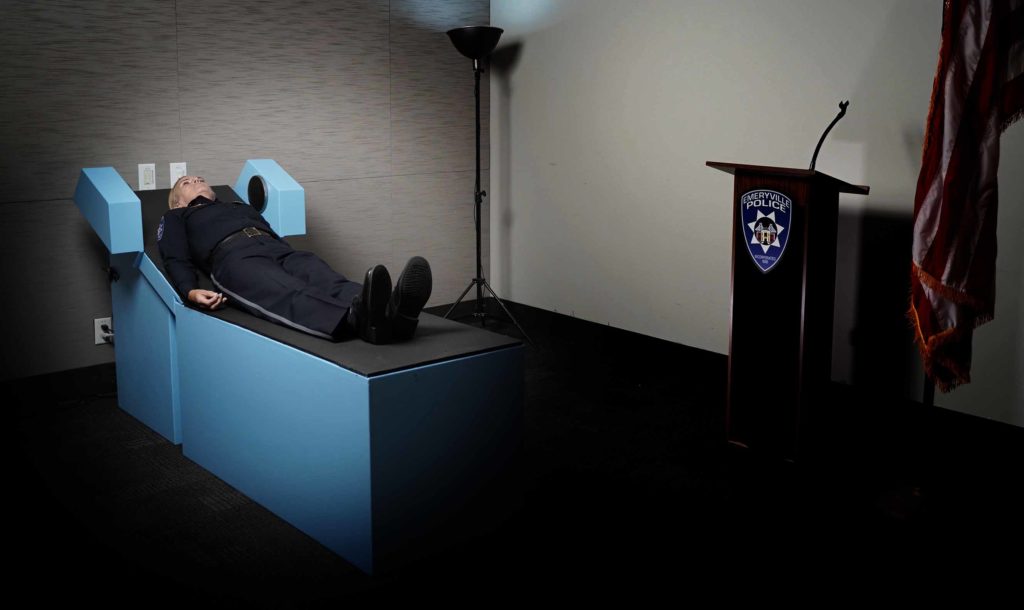

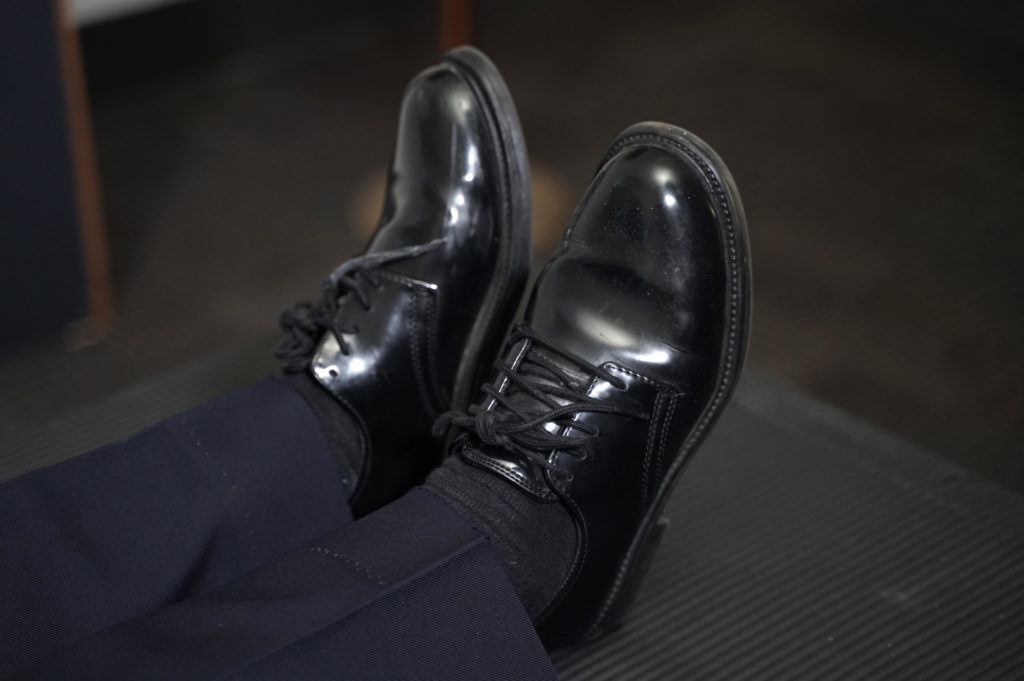
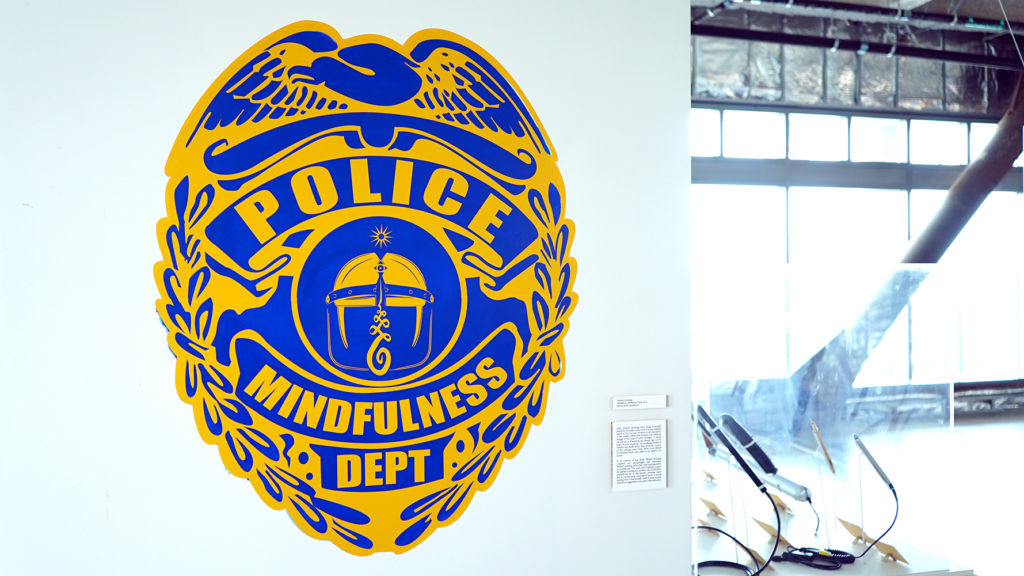
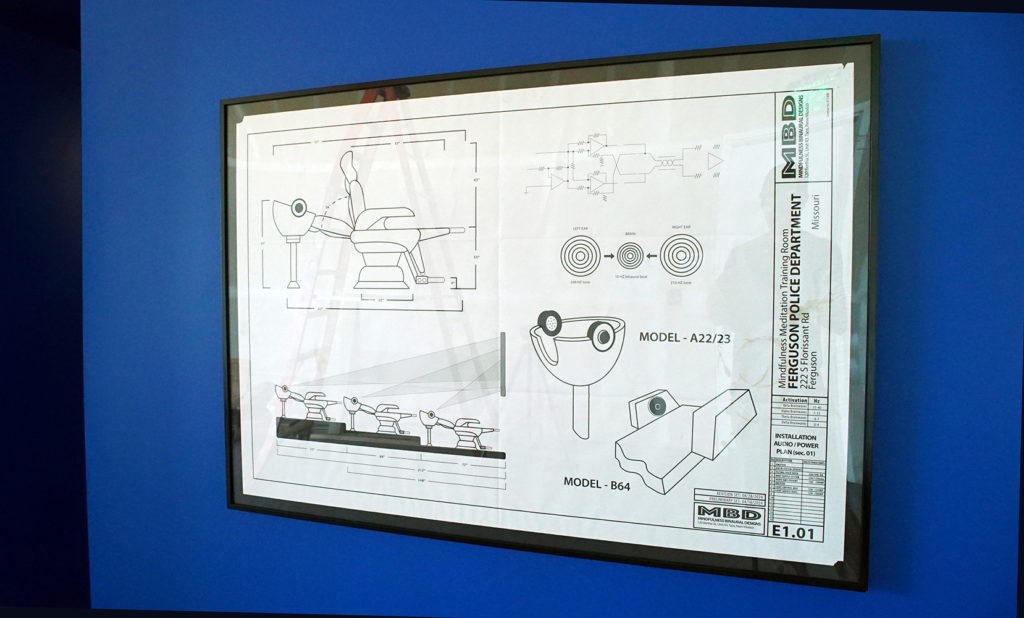
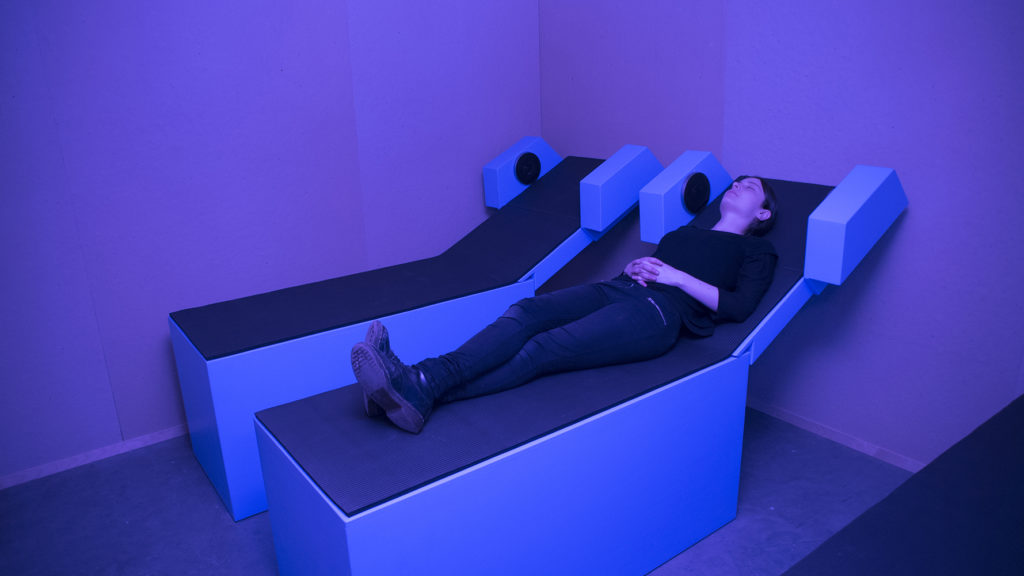

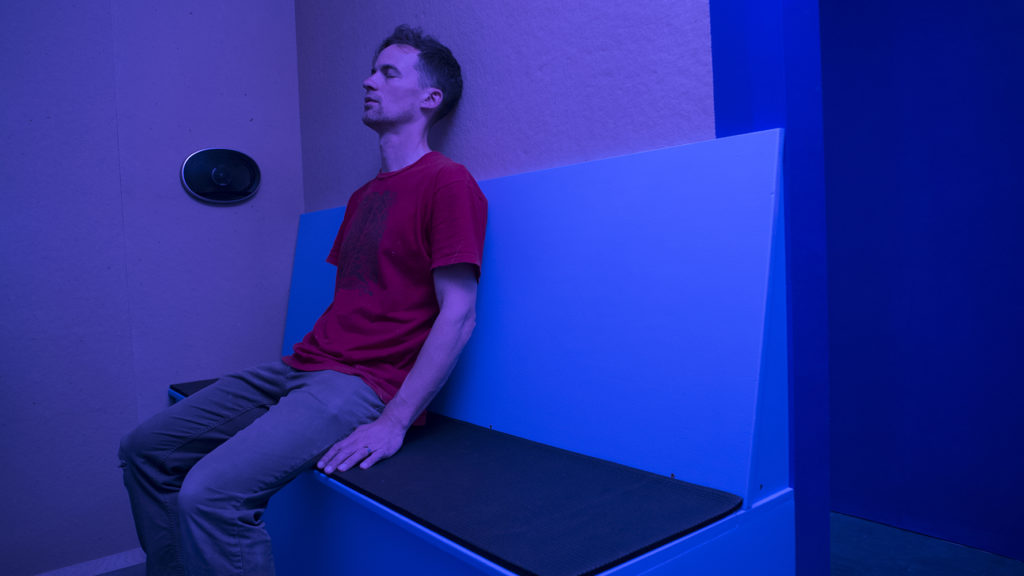
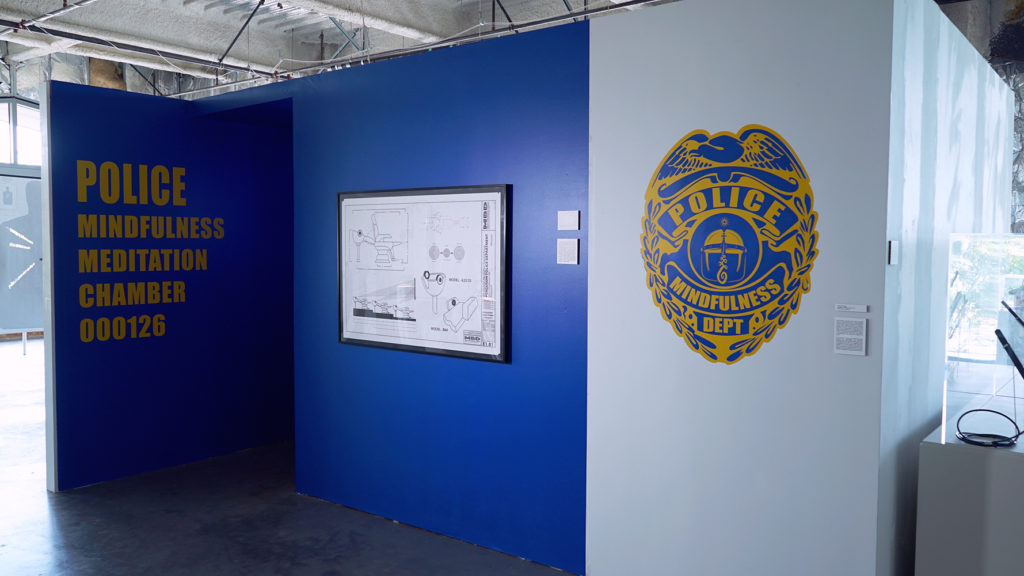
Background:
Growing up in Oakland, it is nearly impossible to be unaware of the history of police corruption and violence. However, the key moment in the conception of this work was when I was personally beaten by riot police as part of an Occupy Oakland march in 2012. While not a severe example of police brutality, the incident sparked my interest in trying to understand the mental state of the police in confrontational situations because the officers who beat me were smiling.
From 2012 to 2020 the project transformed from an ironic audio protest prop, into a more sincere effort to reach individual officers in a protest situation, to a theoretical installation at the Museum of Capitalism, and finally to testing in the Emeryville Police Department. It went from artwork talking about something, to becoming the thing itself.
In the creation of the calming audio work back in 2012 I consulted two psychologists and Lieutenant Richard Goerling, who trains other first responders in mindfulness. The work draws on soothing tones and binaural beats to create a hypnotic space of self-centering contemplation. The meditation traverses a tense police protest standoff, to a complete body scan (including weapons and armor) and ends with a mind’s eye experience designed to give perspective and a sense of bonding with fellow humankind.
The practice of mindfulness involves being aware moment-to-moment, of one’s subjective conscious experience from a first-person perspective. Mindfulness practice is being employed in psychology to alleviate a variety of mental and physical conditions, such as bringing about reductions in depression symptoms, reducing stress, anxiety and leading to better decisions through mental clarity and presence.
